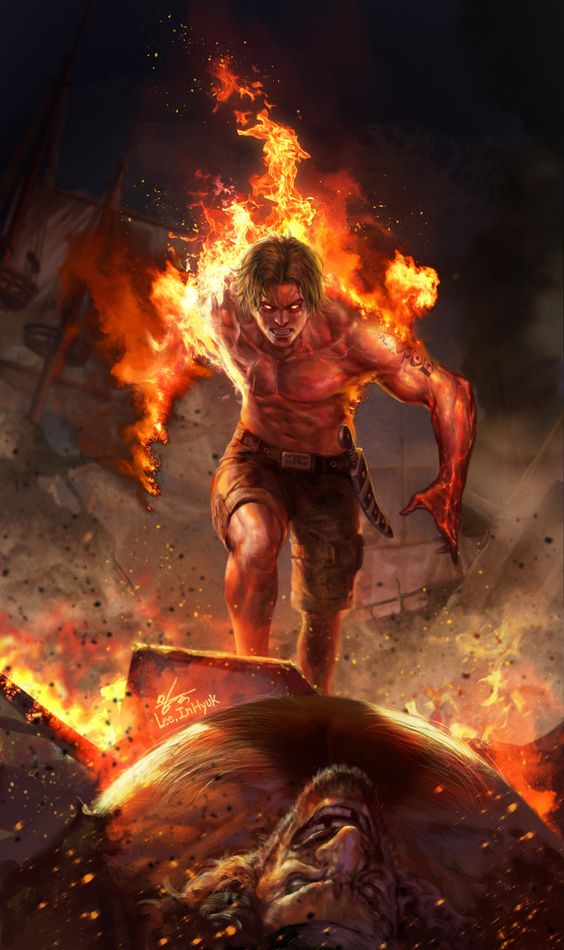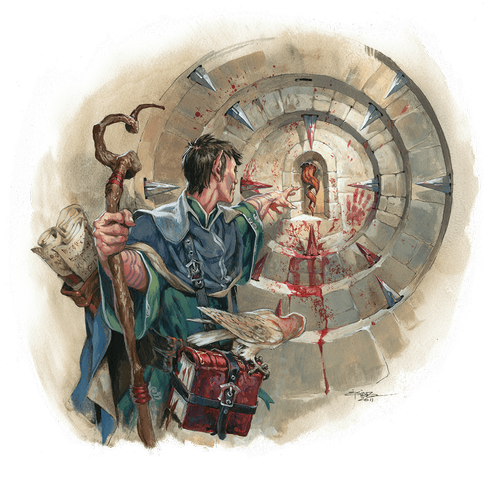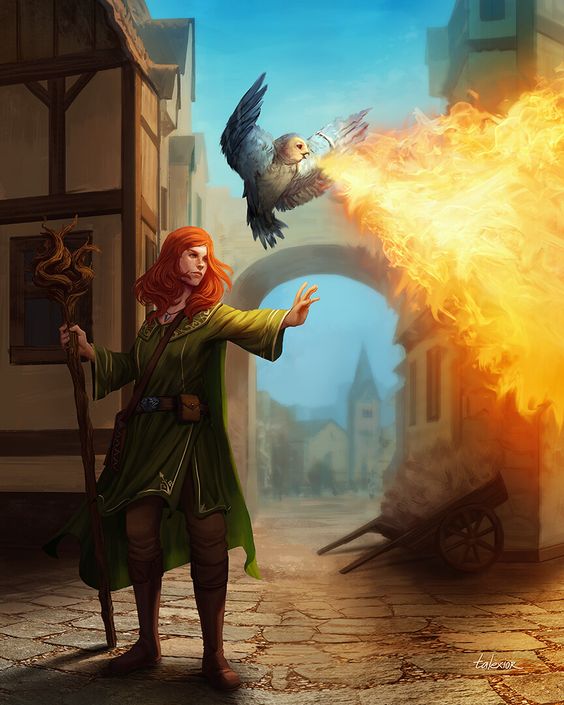D&D 5e Flames of Phlegethos Guide: Set The World (And Yourself) On Fire
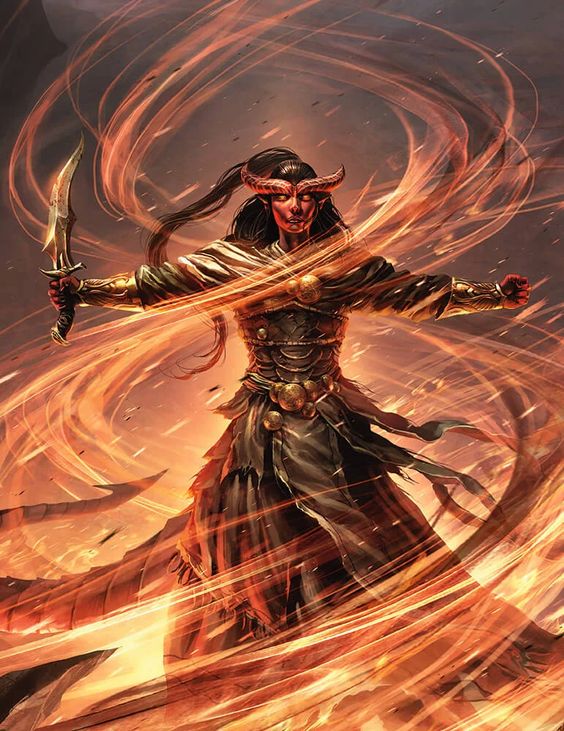
D&D 5e Flames of Phlegethos Guide: Set The World (And Yourself) On Fire
SOURCE: Xanathar’s Guide to Everything
Rating the Benefits of Flames of Phlegethos
Benefit #1 –
Increase Intelligence or Charisma by 1 to a maximum of 20
Half an ASI is a great boost offered by many feats. The choice of premier mage stats is excellent, especially considering everything else in the feat triggers on spells cast
Benefit #2 –
When casting a spell, any rolls of 1 on damage dealt as fire can be rerolled
Fire spells tend towards high damage and lots of dice. Unsubtle, but undoubtedly effective. This feature works on any spell that deals fire damage and lets you reroll the low-rolling dice, making your blasts that much more effective.
Benefit #3 –
After casting a fire spell that deals fire damage, a character with this feat can wreathe themselves in flames until the end of their next turn. This sheds light like a torch (30ft bright, 30ft dim) and any enemy hitting you takes 1d4 fire damage.
1d4 damage isn’t a lot, but this triggers every time an enemy hits you and should be up in most combat rounds. On a tank, this is great, adding a little bit of out-of-sequence damage. It’s also going to feel meaningful against hordes of enemies.
There are ways to make this feature much stronger. More on this later in the guide.
The feat also gets bonus points for style, here. While the light radius probably won’t ever make a mechanical difference (unless you refuse to carry a torch any longer because you are the torch) wrapping yourself in flames is just so cool.
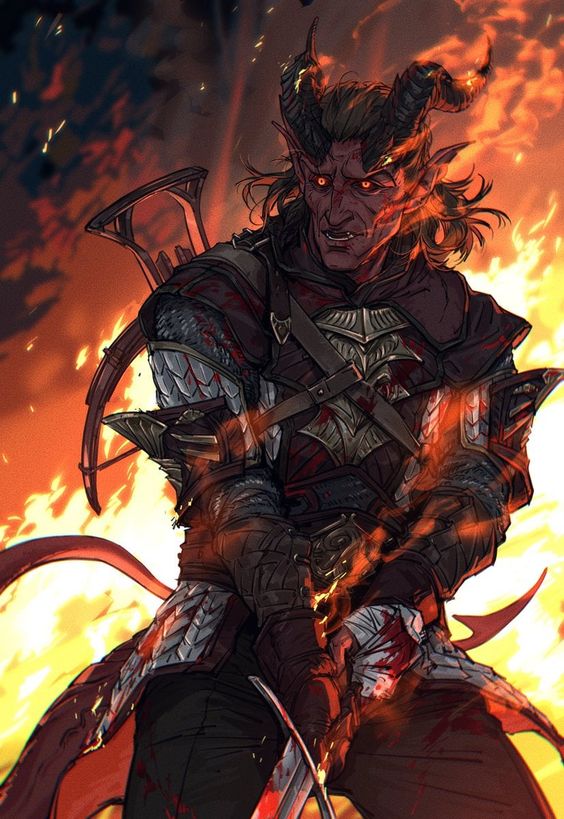
Mechanics and Requirements
Understanding How It Functions
The Flames of Phlegethos feat does two major things: Boosts fire damage for spells and lets a character set themselves on fire to deal even more damage.
Rerolling 1s for Fire Damage
The first major benefit of the Flames of Phlegethos feat is the ability to reroll any damage roll of 1 on spells that deal fire damage.
With the right build, this is a surprisingly big deal. Fire spells are among the most numerous in the game, and tend to focus heavily on dealing damage, either as single-target bursts or in AOEs large and small.
Every spell list in the game contains spells that do fire damage. Several of the best combat cantrips also deal fire damage, for example Firebolt, and Produce Flame.
Fire as a theme is also common among subclasses. Every main spellcasting class has a subclass themed around either elemental damage, such as the Evocation Wizard, or Fire directly, like the Sorcerer’s Draconic Bloodline.
Here are the important considerations:
- The ability only works on spell damage, and only on any dice that directly deal fire damage. No rerolling the damage from an Ascendant Dragon’s elemental strikes, for example
- Spell damage delivered through a weapon is absolutely fine. Elemental weapon, the Green Flame Blade cantrip, Branding Smite. Be careful to only reroll dice for fire damage, though. Still can’t touch your weapon dice!
- Any amount of dice that show a 1 can be rerolled. If they land on 1 again, they can’t be rerolled a subsequent time
- The ability has no restrictions on timing. Spells that deal damage over multiple turns, or in an enemy’s turn, are completely fair game
- There’s no limit on the number of times the ability can be used, and no action is needed to use it
- Cantrips are spells, which means the ability works perfectly fine with any cantrip that deals fire damage
Because fire damage is so prevalent, it’s easy for a character to build almost completely around flame spells. Rerolling a single 1 isn’t a big damage boost. It increases the average result by a single point, from 3.5 to 4.5.
But when that same ability is used every turn, and iterated across multiple dice (Fireball, available at level 5, throws 8 dice per cast…) suddenly this is a significant boost in power.
Reflected Flame Damage
The second part of the Flames of Phlegethos feat is the ability to, whenever casting a flame spell, set the character ablaze.
This does two things, both lasting until the end of the next turn:
- The character sheds light identically to a torch; a 30ft radius of bright light, and a 30ft radius of dim light.
- Whenever the character is hit by a melee attack by another creature within 5ft, they deal 1d4 fire damage in return
The first part of this ability is a ribbon. Glowing like a torch is entertaining, but probably won’t ever have any mechanical benefits. 1. This feat is Tiefling-exclusive, and every Tiefling has Darkvision as standard. 2. If you can cast a fire spell every turn, you can probably cast the light cantrip.
It’s the second section we’re here for. Reflecting damage to melee attackers is something that’s spread across a surprisingly wide range of class features and spells in 5e.
While 1d4 damage isn’t a lot, especially once the characters level into double figures, it is consistent. A character taking this feat is likely to lean hard into fire spells, because of the reroll damage feature, so this damage should be available every single turn.
Later in the guide, we’ll go over ways to make this ability stronger. Much stronger, in some cases.
Key Stats
Flames of Phlegethos boosts a character’s Intelligence or Charisma by 1, to a maximum of 20. These are welcome bonuses, as they’re the key spellcasting stats for more than half of the game’s caster classes.
Ideal Characters for Flames of Phlegethos
Top Classes
Warlock – Ah, Tiefling and Warlock. Can anyone name a more obvious pairing?
The Genie subclass is perfect for the feat. Bonus damage on every attack in an elemental typing of your choice (so, uh, fire then.) All the flame spells you could ever want, including the king of flames, Fireball. And a host of interesting out-of-combat abilities that boost the character and their party.
The best part is, that all of this is entirely character agnostic, leaving the build free to grab whatever Eldritch Invocations and Warlock Pacts they feel are best. Or whatever’s the most fun. Which is often the same thing.
Paladin – If you can grab Green-Flame Blade from somewhere, (check the feats list in this guide…) the Paladin is an incredibly powerful user of this feat. Smite is already one of the best damage buffs in the game. The Paladin’s spell list has several options for further flame damage, and forcing enemies to target the literal knight in gleaming armor, with bonuses to saves, is what the party generally wants happening.
Glory Paladins make their party tougher, and gain Flame Strike as a damage option at high levels. But we’d lean toward Conquest as a subclass. Armor of Agathys stacks incredibly well with this feat (more on this later in the guide) and the subclass’s overall theme of disabling enemies and limiting their options is everything you already wanted to do.
Evocation Wizard – Ah, Fireball. It’s incredible how many problems can be solved through the judicious use of a giant magical explosion. But the problem is, sometimes those pesky allies get in the way and start crying when half their HP total magically vanishes. Inconvenient, right?
Evocation Wizards are blasters beyond compare. Able to drop AOEs directly on the party and ignore a handful of squares, combining that with this feat lets you drop the biggest blasts of flame you can conjure directly onto everybody’s heads, then walk away from the ensuing carnage without looking back.
Later levels bring more damage, and, um, even MORE damage. It’s not a subtle subclass. But it is an effective one.
Druid – For a class concerned with the balance of nature, the Druid’s spell list has a concerning amount of spells that revolve around burning things. From cantrips such as Produce Flame to things like Heat Metal, Wall of Fire, and Incendiary Cloud, at every level, a Druid can use the benefits of this feat.
The Circle of Wildfire subclass is even built entirely around fire damage, with a cool little flaming spirit summon, and weirdly, a bunch of ways to keep the party alive. The spell list is fantastic, boosts to damage are welcome, and bonus healing even lets the character flex into a secondary healer.
Race or Subrace Choices
Flames of Phlegethos is a Tiefling exclusive racial feat.
The Tiefling currently has 10 subrace variants available, plus one more in Unearthed Arcana. Variant Tiefling subraces are now considered legacy content in Adventurer’s League, but for anything else, this is a huge amount of build variation.
Combos, Tactics, and Synergies
Complementary Feats
Elemental Adept – Fire is a widely resisted damage type, which will cut your damage straight in half. Elemental Adept lets you pretend that the problem doesn’t exist.
Magic Initiate – If your spell list doesn’t have all the burny cantrips you want, steal them from someone else’s instead.
Metamagic Adept – Twice per day, Transmuted Spell takes a spell that doesn’t normally deal fire damage and shifts it to your favorite type.
Spells that Synergize
Fireball – The gold standard in fire damage. Fireball throws a bucket of dice at every enemy in a huge radius. Rerolling 1s on that damage increases the result by an average of 3-4 points, but also acts as insurance on the days the dice hate you and only show the worst results.
Fire Bolt – Yes. It’s a cantrip. Yes, it triggers both parts of this feat. Yes, you’re going to deal consistently more damage, plus gain a retaliatory damage shield. Firebolt is great.
Strategies for Maximizing Flames of Phlegethos Effectiveness
Trigger it every turn
The bonus damage from the Flames of Phlegethos feat triggers when the character casts a spell that deals fire damage.
Cantrips are a special category of spells. Many cantrips, including Fire Bolt, Produce Flame, and Green Flame Blade, deal fire damage.
For a character so inclined, there’s no reason why the spell’s effects can’t be used every single turn, even when they’re not casting a leveled spell.
Melee Flames of Phlegethos
One of the single best uses of this feat is on a melee character, upfront and dealing with enemies in glorious single combat. The reason is, that it’s much harder for enemies to ignore the fiendblood warrior burning with hellish flames when she’s trying to stab you in your vulnerable spots.
From level 5, the Green-Flame Blade cantrip deals consistent fire damage, triggering the effects of this feat every single turn. Statistically, the weapon cantrips from SCAG (Green Flame and Booming Blade) are roughly equivalent to the Extra Attack feature of martial characters, so you’re not losing out on damage by casting them instead of attacking twice.
For a tanky spellblade type; the Paladins, the Clerics, the Artificers, this is a great way to create a threatening frontliner. Wade into combat. Force enemies to focus on you. Deal retaliatory damage when they strike back.
Now, if only there was a way to increase the damage enemies took when they hit you back…
Onwards!
Stack Retaliation Damage
The feedback damage from Flames of Phlegethos is consistent, but it isn’t very high. There are multiple similar effects throughout 5e, and layering these on top of each other can make the ability much more effective.
Fire Shield
Fire Shield grants resistance to either Fire or Cold damage for up to 10 minutes, plus deals 2d8 damage of the appropriate type whenever a creature strikes you with a melee attack.
Every Tiefling already has resistance against fire damage. But stacking the damage from Flames of Phlegethos on top of this spell boosts average DPS by around 25%, which can be surprisingly punchy, especially combined with a tanky class like the Cleric.
Overall Damage – 2d8 + 1d4 (avg. 11.5) per enemy attack
Armor of Agathys
While Armor of Agathys doesn’t synergize with anything this feat offers. The effect; a chunk of temporary HP and surprisingly high reactive damage, is strong enough to stand by itself, and only gets better when combined with the benefits of Flames of Phlegethos.
The spell is generally only found on the Warlock spell list, with several other minor ways to get your hands on it, generally further feat support. Melee characters can get real use from this, but any build loves extra HP and free retaliatory damage.
Overall Damage – Spell level x 5 + 1d4 per enemy attack
Hellish Rebuke
2d10 damage isn’t particularly impressive for a 1st level spell slot. Casting it as a reaction is, especially if it triggers the benefits of this feat.
Conveniently, the default Tiefling bloodline of Asmodeus comes with Hellish Rebuke as a free once-per-day cast for easy triggers.
Overall Damage – 2d8 + 1d4 (11.5) as a reaction
Ignore resistances
Fire is the most commonly resisted damage type in 5e. Literally, hundreds of creatures in the monster manual have resistance to it, and many NPCs and humanoid enemies will also gain fire resistance from racial or class-based archetypes.
So what to do?
If you’re set on leaning hard into a fire build, the best way to deal with enemy fire resistance is to ignore it. Literally.
The Elemental Adept feat allows a character to ignore resistance to one type of damage with their spells. For a character wanting to deal primarily fire damage, it’s almost invaluable.
There are also further benefits, including a non-insignificant boost to elemental damage, which increases the effectiveness of this combo even more. Read our full guide on Elemental Adept here.
Don’t ever go all in on fire
As already mentioned (several times) in this guide, fire is the most common damage type for enemies to have resistance against in D&D 5e.
It’s also the most common damage immunity. As in, fire deals no damage. Zero. Nada.
And unlike resistance, there is no way around damage immunity.
So, word to the wise, always have another appropriate option in the back pocket, for those times your GM gets sick of you blowing up all his carefully crafted encounters in the first round.
Final Thoughts on Flames of Phlegethos
Is Flames of Phlegethos a super-powered feat that lights the world ablaze with its infernal majesty?
No.
But it is great fun, with a decent little benefits list that slots into a lot of different builds as varied as squishy blast casters and frontline tanks. While it isn’t hyper-optimized, a lot can be done with the feat, especially if you lean hard into the mechanics of it.
Most importantly, every time you get to reroll a bunch of dice, or slowly cook enemies that are hitting you, you’re going to feel the effects. Flames of Phlegethos is fun to use, and that’s a huge plus. After all, it’s why most of us play this crazy game.




